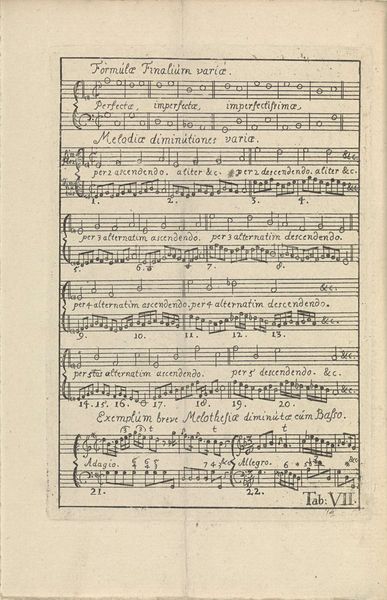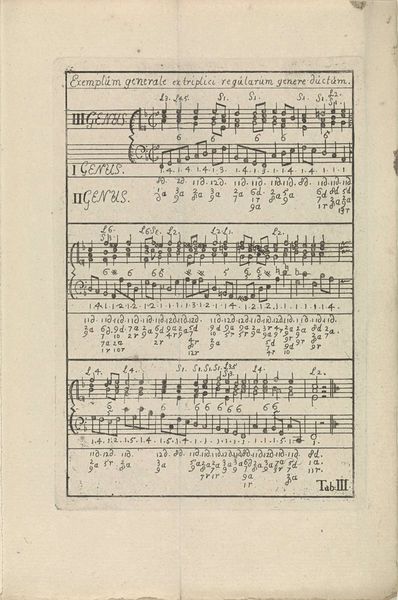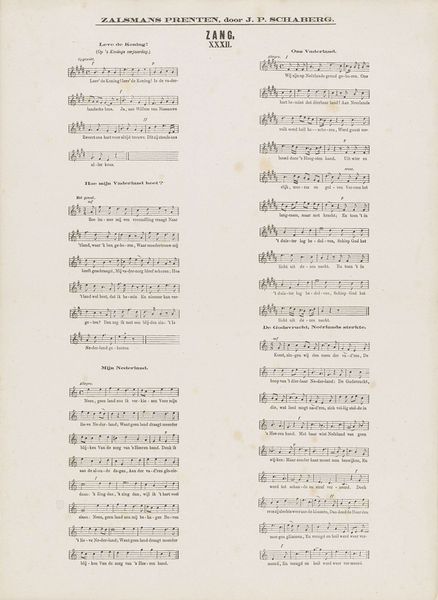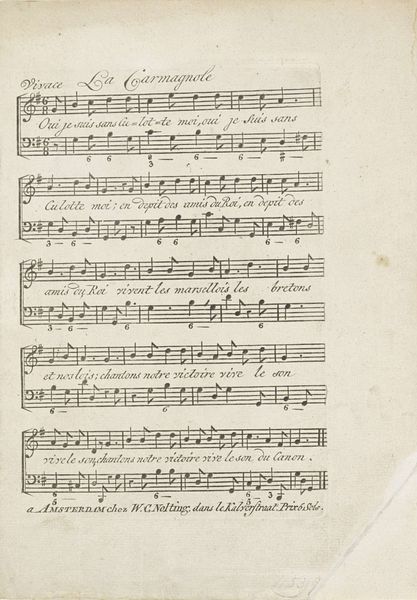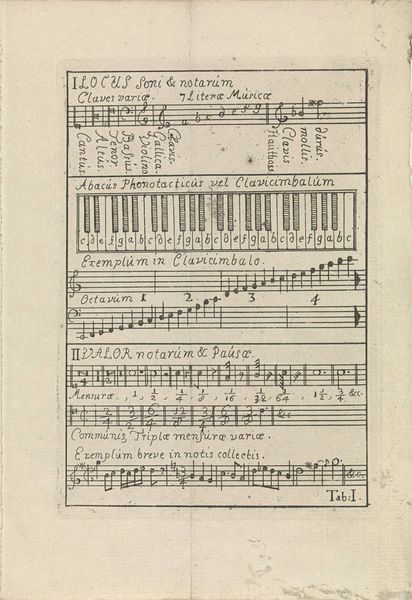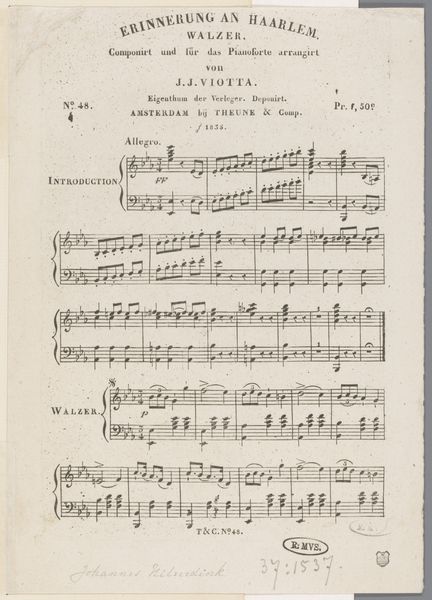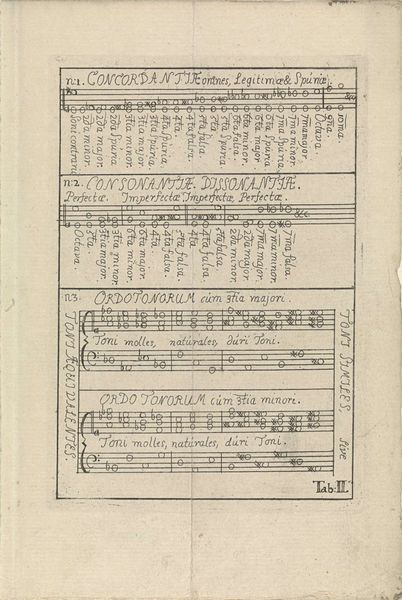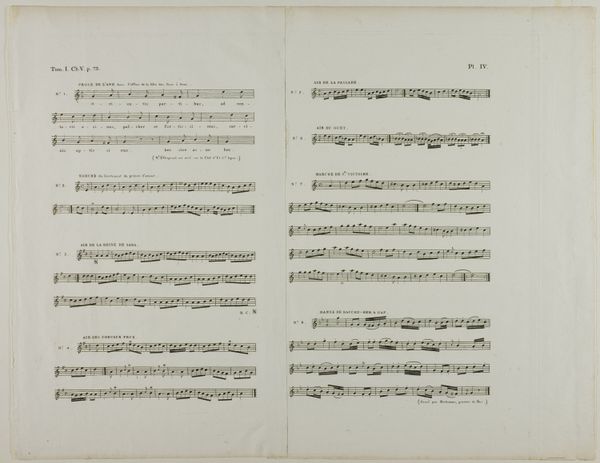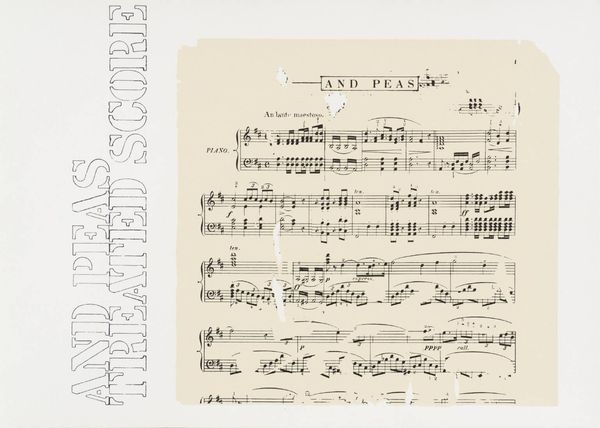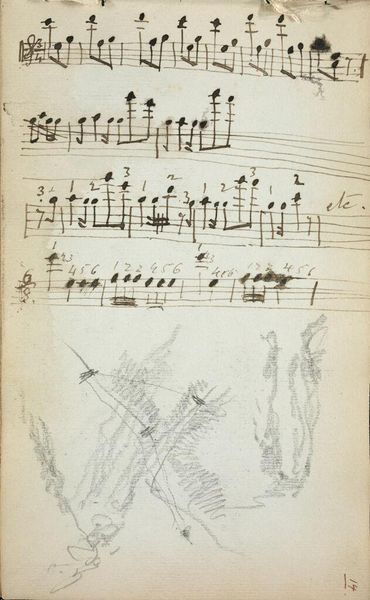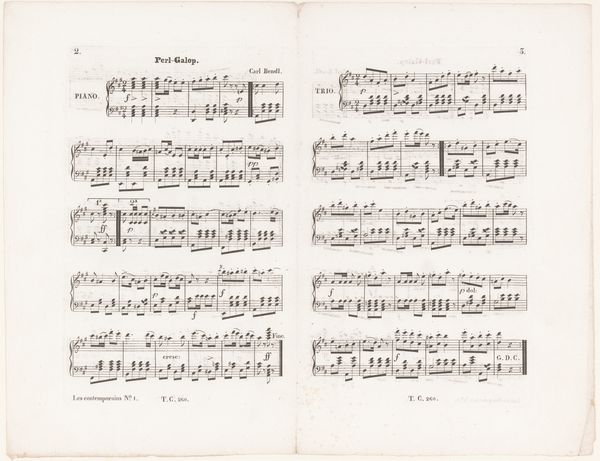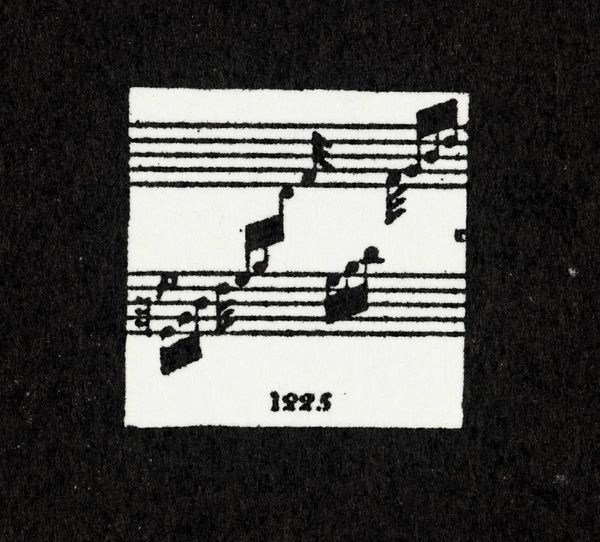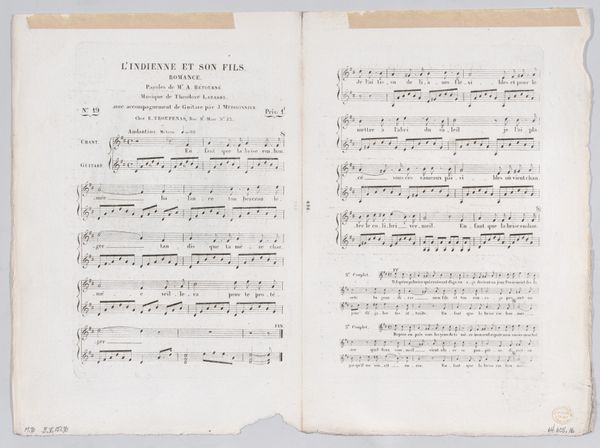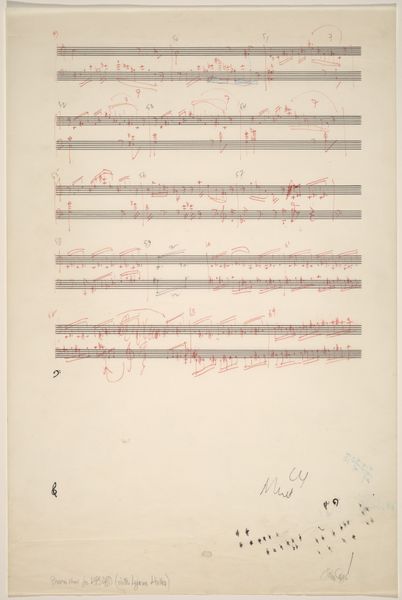
drawing, graphic-art, paper, ink
#
drawing
#
graphic-art
#
baroque
#
paper
#
ink
#
geometric
#
line
#
calligraphy
Dimensions: height 150 mm, width 104 mm
Copyright: Rijks Museum: Open Domain
Editor: This is "Bladmuziek Tab. VIII," created in 1743. It seems to be an anonymous drawing using ink on paper, full of baroque-style musical notation and geometric elements. The tight lines of text create a formal grid and strike me as simultaneously beautiful and deeply impenetrable. What can you tell me about it? Curator: Well, let’s consider what this sheet music represents within its historical context. Beyond just musical notes, this piece embodies a certain kind of codified knowledge that was heavily guarded during the Baroque period. Editor: Guarded how? Curator: Access to musical training, composition, and even the *understanding* of notation like this, was very exclusive. The Church and aristocratic courts were the primary patrons of the arts. Music became a way to display wealth and social standing. Think of it like this: who had the time, the resources, to decode these geometric abstractions and turn them into sound? Editor: So, the calligraphy itself performs a kind of power, visually separating those who "know" from those who don’t? Curator: Exactly! And consider the language. Much of it is in Latin, a language of the educated elite. "Exemplum Contrapuncti" – an example of counterpoint. It is literally presenting an *example* of something complicated, demonstrating the sophistication of the composer and, by extension, the patron who funded its creation. Look closer at those perfectly inscribed lines… Does the neatness remind you of something? Editor: Maybe… the printing press? Or even earlier forms of formalized writing, like illuminated manuscripts in monasteries? Curator: Precisely. It connects this specific knowledge—musical theory—with the longer history of carefully reproduced information. These elegant systems controlled the distribution of ideas, maintaining hierarchies of intellect and influence. Editor: I see this sheet music now as not just instructions, but a cultural symbol, reflecting social divisions and knowledge gatekeeping in the Baroque era. Curator: Right! By understanding that aspect, we appreciate a deeper story within something seemingly straightforward, leading to us being better informed.
Comments
No comments
Be the first to comment and join the conversation on the ultimate creative platform.
